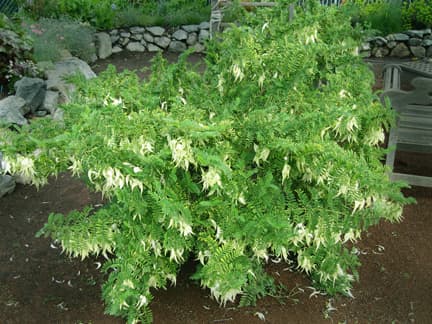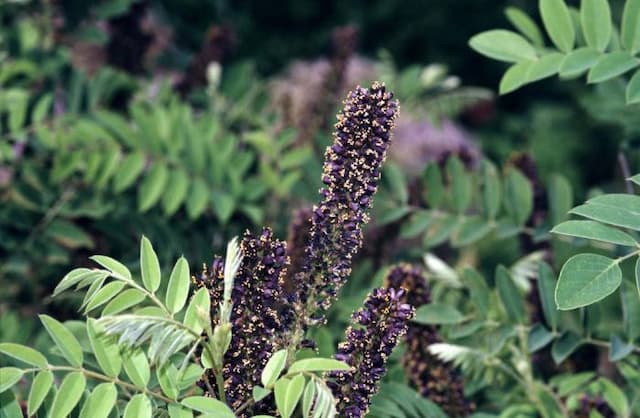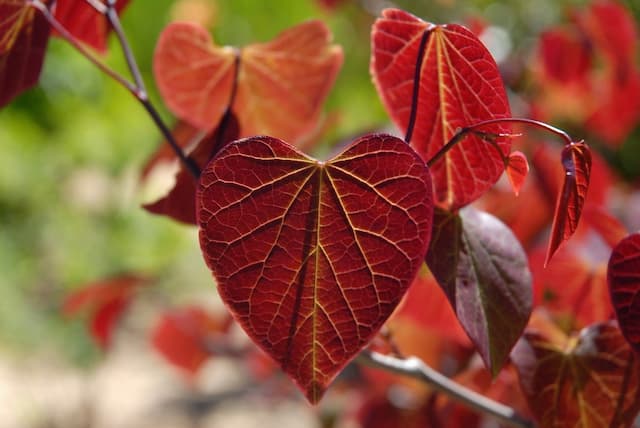Bird of Paradise Shrub Erythrostemon gilliesii

ABOUT
Commonly known as Bird of Paradise Bush, this plant is a striking and unique ornamental addition to any garden. The appearance of Bird of Paradise Bush is characterized by its vibrant, yellow pea-like flowers which stand out against the feathery, bluish-green foliage. Each flower has a long, protruding stamen which gives it an exotic, bird-like appearance and adds to its ornamental value. The flowers are arranged in clusters at the ends of the branches. The leaves of the Bird of Paradise Bush are bipinnate, which means they are divided into smaller leaflets, giving them a delicate, fern-like texture. The overall impression of the plant is one of tropical elegance and colorful allure thanks to its distinctive flowers and attractive foliage.
About this plant
 Names
NamesFamily
Fabaceae
Synonyms
Bird Of Paradise Bush, Yellow Bird Of Paradise, Desert Bird Of Paradise, Barba De Chivo
Common names
Caesalpinia gilliesii, Poinciana gilliesii, Poincianella gilliesii.
 Toxicity
ToxicityTo humans
Bird of paradise shrub can be toxic to humans if ingested. While it is not commonly known to be deadly, eating parts of the plant may cause gastrointestinal symptoms such as nausea, vomiting, and diarrhea. It is advisable to keep this plant out of the reach of children who might accidentally ingest it.
To pets
Bird of paradise shrub contains compounds that are toxic to pets. If ingested by animals such as dogs or cats, it may result in symptoms like vomiting, diarrhea, lethargy, and in severe cases, it can lead to more serious health issues. It is important to prevent pets from chewing or consuming any part of this plant.
 Characteristics
CharacteristicsLife cycle
Perennials
Foliage type
Deciduous
Color of leaves
Green
Flower color
Yellow
Height
10 feet (3 meters)
Spread
6 feet (1.8 meters)
Plant type
Shrub
Hardiness zones
8
Native area
Argentina
Benefits
 General Benefits
General Benefits- Ornamental Value: Erythrostemon gilliesii, commonly known as Bird of Paradise Bush, has vibrant yellow flowers with distinctive red stamens that add aesthetic beauty to gardens and landscapes.
- Drought Resistance: This plant is highly drought-tolerant once established, making it suitable for xeriscaping and arid environments.
- Wildlife Attraction: The blossoms attract pollinators such as bees and butterflies, enhancing biodiversity in the garden.
- Low Maintenance: Bird of Paradise Bush requires minimal care, thriving in poor soils with little additional watering or fertilizing once established.
- Fast Growth: It has a quick growth rate, providing a rapid display of flowers and foliage.
- Heat Tolerance: Erythrostemon gilliesii can withstand high temperatures, making it ideal for warm climates.
- Shade Provision: The bush can grow into a small tree, offering shade in sunny garden spots.
- Seasonal Interest: With its distinctive flowering season, it provides a flush of color in spring or early summer when other plants may not be in bloom.
- Soil Erosion Control: The plant's root system can help stabilize soil and prevent erosion on slopes.
 Medical Properties
Medical PropertiesThis plant is not used for medical purposes.
 Air-purifying Qualities
Air-purifying QualitiesThis plant is not specifically known for air purifying qualities.
 Other Uses
Other Uses- Erythrostemon gilliesii, commonly known as Yellow Bird of Paradise, can be used as a natural dye for fabrics, giving a range of yellow hues depending on the mordant used.
- The wood of Yellow Bird of Paradise is hard and can be used for making small wooden objects such as tool handles, owing to its durability.
- The seeds of the plant have been used in traditional games and jewelry-making, especially as beads due to their hard casing and unique shape.
- Due to its distinctive shape and color, the Yellow Bird of Paradise can serve as a unique subject for botanical illustrators and photographers.
- The plant's ability to thrive in arid environments makes it an ideal candidate for xeriscaping, contributing to water conservation efforts in landscaping.
- Because of its nitrogen-fixing properties, the Yellow Bird of Paradise can be used in improving soil fertility in barren areas.
- The flowers provide nectar for hummingbirds and bees, enhancing the habitat value of gardens and landscapes where it is planted.
- It can be grown as a hedge or screening plant due to its dense growth habit, providing privacy for homes and gardens.
- The vibrant blossoms of Yellow Bird of Paradise can be used in floral arrangements as filler flowers to add a splash of color.
- The dried seed pods create a rattling sound when shaken and can be used as a component in musical instruments, such as maracas or rainsticks.
Interesting Facts
 Feng Shui
Feng ShuiThe Bird of Paradise is not used in Feng Shui practice.
 Zodiac Sign Compitability
Zodiac Sign CompitabilityThe Bird of Paradise is not used in astrology practice.
 Plant Symbolism
Plant Symbolism- Resilience: Erythrostemon gilliesii, commonly known as Bird of Paradise Bush, can survive in tough conditions, symbolizing the ability to endure and thrive through challenges.
- Uniqueness: The Bird of Paradise Bush's distinct bright yellow flowers with long red stamens make it stand out, representing individuality and uniqueness.
- Freedom: Its free-growing and spreading habit signifies liberty and the desire for personal growth and exploration.
- Beauty: With its ornamental qualities, the Bird of Paradise Bush is often associated with beauty and the appreciation of visual aesthetics.
- Attraction: The plant's vibrant colors and unique shape can attract birds and pollinators, symbolizing allure and magnetism in the natural world.
 Water
WaterFor the Bird of Paradise shrub, watering should occur once every one to two weeks, depending on climate and soil conditions. It's crucial to let the soil dry out between waterings to encourage strong root growth and avoid root rot. When you do water, do so deeply, providing about one to two gallons of water for each plant, ensuring that it reaches the root zone. During the hot summer months, you may need to water more frequently, but always check the soil moisture first. In the winter, when the plant is dormant, reduce watering to when the soil is dry to the touch several inches below the surface.
 Light
LightThe Bird of Paradise shrub thrives best in full sun to partial shade conditions. It should be placed in a spot where it can receive at least six hours of direct sunlight daily. However, in exceedingly hot climates, some afternoon shade is beneficial to prevent leaf scorch. The ideal spot for this plant is one where it can bask in the morning sun while being shielded from the intense afternoon heat.
 Temperature
TemperatureThe Bird of Paradise shrub prefers warm conditions and is hardy in temperatures ranging from 25°F to 100°F. The ideal temperature for robust growth is between 65°F and 85°F. It's important to protect the plant from frost, as it can damage the foliage and compromise the health of the plant. If an unexpected freeze is forecasted, be sure to cover the plant or bring it indoors if it is potted.
 Pruning
PruningPruning the Bird of Paradise shrub is necessary to remove dead or damaged branches and to promote a more compact, bushy growth habit. The best time for pruning is in late winter or early spring before new growth begins. Prune sparingly, cutting back no more than one-third of the plant at a time. It is also a good practice to remove spent flowers and seed pods to encourage new blooms.
 Cleaning
CleaningAs needed
 Soil
SoilBird of paradise shrub requires a well-drained soil mix with a pH range of 6.5 to 7.2. A mixture of loam, sand, and peat is ideal to provide the balance of aeration, moisture retention, and nutrients. Adding some organic matter like compost can also enrich the soil, fostering healthy growth.
 Repotting
RepottingThe bird of paradise shrub should be repotted every 2 to 3 years to refresh the soil and provide room for growing roots. Younger plants may need more frequent repotting, while established plants can be repotted less often.
 Humidity & Misting
Humidity & MistingBird of paradise shrub thrives in moderate to high humidity levels, ideally around 40% to 60%. They do well in typical indoor environments but may benefit from occasional misting.
 Suitable locations
Suitable locationsIndoor
Place in bright, indirect light and water when the topsoil is dry.
Outdoor
Full sun to partial shade; protect from strong winds and frost.
Hardiness zone
8-11 USDA
 Life cycle
Life cycleBird of Paradise Shrub, or Erythrostemon gilliesii, begins its life cycle with seed germination, which is influenced by temperature and soil conditions. The seeds develop into seedlings with a basic root system and a small rosette of leaves. As the plant matures, it forms a woody stem and a more complex root system, along with compound leaves that are characteristic of the species. The next stage is flowering, where the plant produces distinctive yellow flowers with long red stamens, resembling a tropical bird, which is how it gets its common name. Following pollination, typically by birds or insects, the flowers develop into pods containing seeds. These seeds are then dispersed, often by wind or animals, marking the beginning of a new plant's life cycle.
 Propogation
PropogationPropogation time
Spring-summer
The most popular method of propagation for the Bird of Paradise shrub, also known as Erythrostemon gilliesii, is through seed germination. The best time to sow seeds is usually in the spring when temperatures are warm enough to facilitate growth. To propagate this plant, seeds should first be soaked in warm water for 24 hours to soften the seed coat, which can greatly enhance germination rates. After soaking, the seeds can be sown about 1/4 inch deep in a well-drained seed starting mix. The soil should be kept consistently moist but not waterlogged and placed in a warm area with temperatures around 70 to 75 degrees Fahrenheit (21 to 24 degrees Celsius). Germination can take anywhere from a few weeks to a couple of months. Once seedlings have emerged and grown large enough to handle, they can be transplanted into individual pots or directly outdoors if the climate is suitable.









